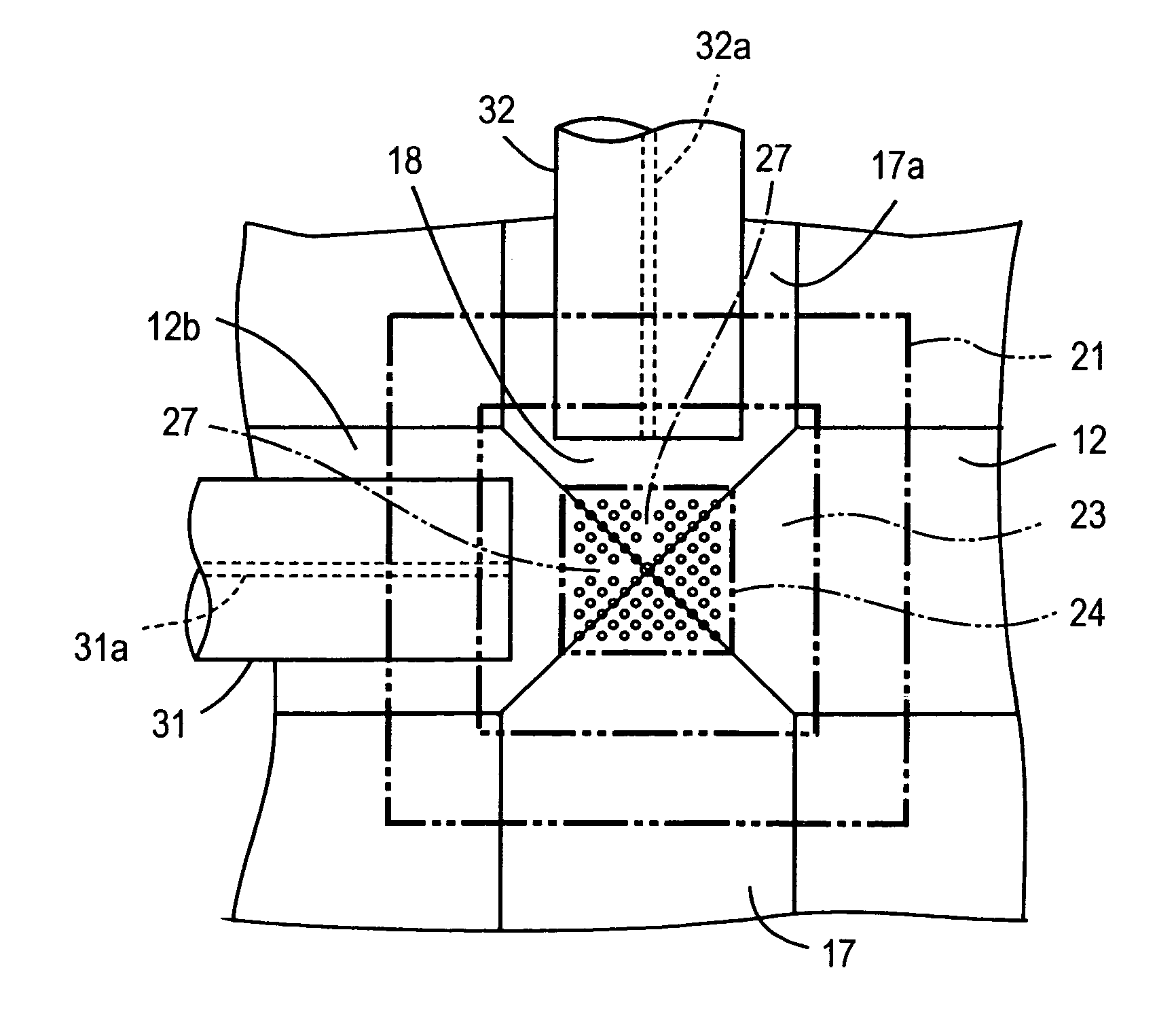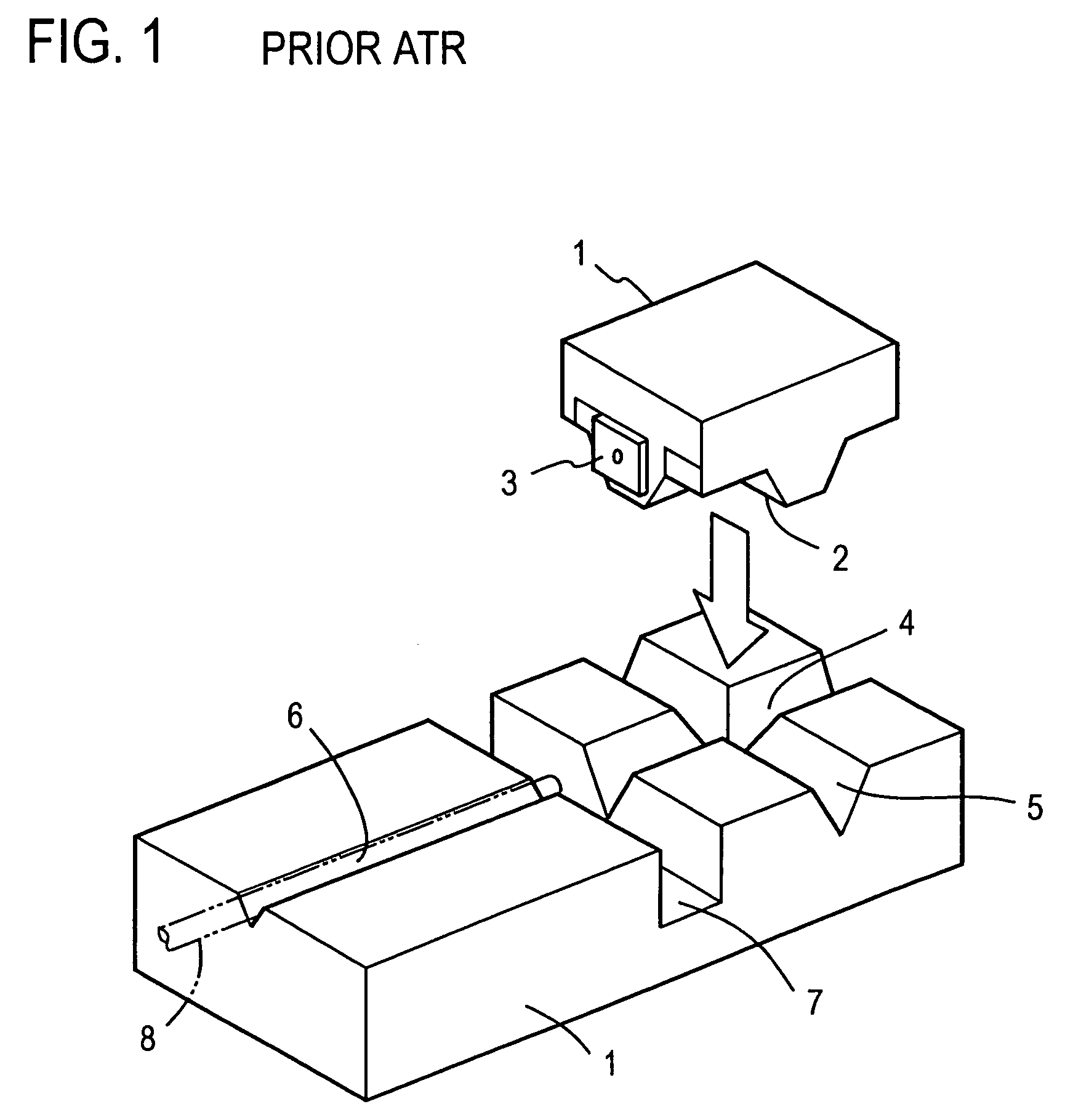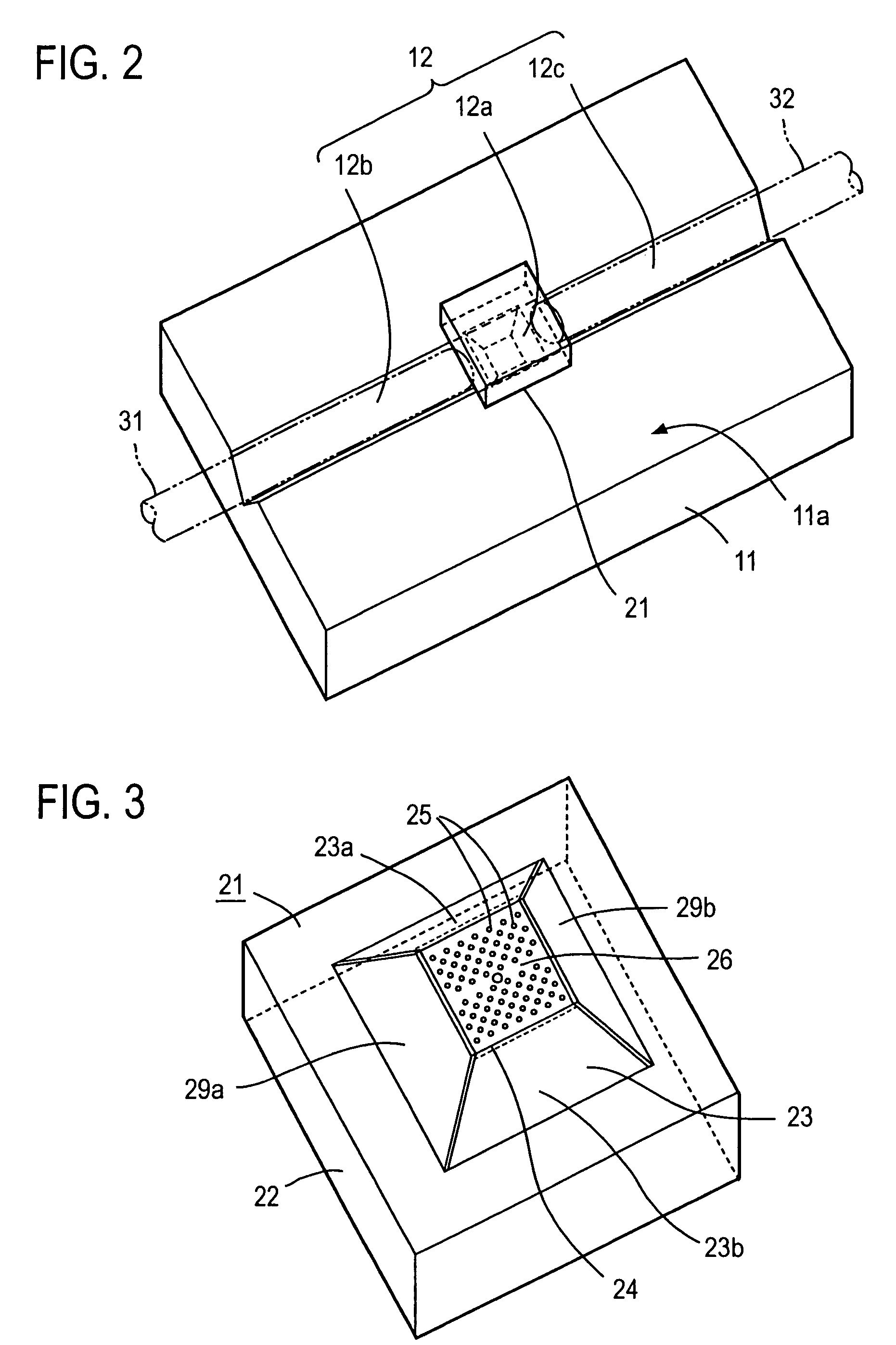Optical element assembly and method of making the same
- Summary
- Abstract
- Description
- Claims
- Application Information
AI Technical Summary
Benefits of technology
Problems solved by technology
Method used
Image
Examples
embodiment 1
[0047]This embodiment uses, as an optical element, a wavelength filter formed of a photonic crystal. As depicted in FIG. 2, an optical element chip 21 is positioned with respect to the mounting surface 11a and mounted on an element mounting portion 12a formed in one surface, i.e. in a mounting surface of a platform 11. The optical element chip 21 may be adhesively bonded to the platform 11. In this embodiment the platform 11 has in its mounting surface 11a a V-groove 12 extending from the one to the other end thereof, and the intermediate portion of the V-groove 12 is used as the element mounting portion 12a. The V-groove portions 12 at both sides of the element mounting portion 12a form part receiving recesses 12b and 12c; in this example, optical fibers 31 and 32 as optical parts are inserted in the part receiving recesses 12b and 12c, then positioned with respect to the mounting surface 11a, and fixed to the platform 11. The optical fibers 31 and 32 are, for example, adhesively b...
embodiment 2
[0068]This embodiment is intended to increase the number of optical element chips 21 obtainable from one wafer 20 (FIG. 6) by making the width of the V-grove of the element mounting portion 12a narrower than the part receiving recesses 12b and 12c and reducing the length of protrusion of the convexity 23. FIG. 7 shows an example of the platform 11 in this embodiment. The element mounting portion 12a and the part receiving recesses 12b and 12c formed by V-grooves are axially aligned with each other, looking in the direction perpendicular to the mounting surface 11a, but the groove width W3 of the element mounting portion 12a is smaller than the groove width W4 of each of the part receiving recesses 12b and 12c. In the case of forming theses V-grooves by anisotropic etching, since both ends of the element mounting portion 12a protrude obliquely downwardly into the recesses 12b and 12c, the optical fibers 31 and 32 cannot be disposed close to the optical element 24 accordingly. In this...
embodiment 3
[0070]This embodiment uses a microminiature lens as an optical part. FIG. 10 shows in section the structure of this embodiment, corresponding to the FIG. 4 sectional view of Embodiment 1, and FIG. 11 depicts an example of the platform 11 for use in this embodiment. In the mounting surface 11a of the platform 11 there are formed a square part receiving concavity 14 and a V-groove 15 extending at right angles to one side thereof and opening into the concavity 14. One part 15a of the V-groove 15 is used as the element mounting portion. In this example, the V-groove 15 is formed as its extension 15b in the platform surface also on the side thereof opposite the element mounting portion 15a; that is, the V-groove 15 opens at both ends to the outside of the platform 11. The part receiving concavity 14 and the V-groove 15 can be formed simultaneously by, for example, anisotropic etching.
[0071]As shown in FIG. 10, a microminiature spherical lens 33 is disposed in and positioned by the part r...
PUM
 Login to View More
Login to View More Abstract
Description
Claims
Application Information
 Login to View More
Login to View More - R&D
- Intellectual Property
- Life Sciences
- Materials
- Tech Scout
- Unparalleled Data Quality
- Higher Quality Content
- 60% Fewer Hallucinations
Browse by: Latest US Patents, China's latest patents, Technical Efficacy Thesaurus, Application Domain, Technology Topic, Popular Technical Reports.
© 2025 PatSnap. All rights reserved.Legal|Privacy policy|Modern Slavery Act Transparency Statement|Sitemap|About US| Contact US: help@patsnap.com



